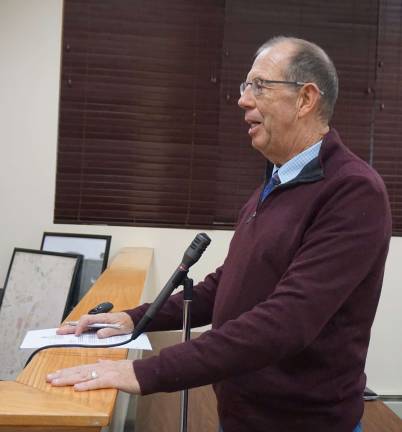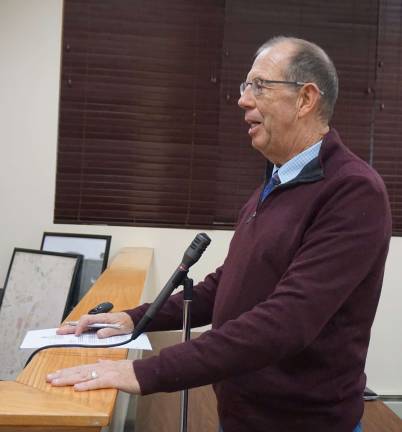Sussex explores water options


SUSSEX BOROUGH — Water Sewer Utility Manager and Engineer Gerry Gardner of Houser Engineering presented a “Raw Water Turbidity Control Study” on Jan. 19 at the Sussex Council meeting.
The first choice, from four options to solve the turbidity issue, could cost around $1.3 million, including the Colesville Dam project.
Gardner said he and James Schappell also had completed the “Borough Asset Management Plan,” a copy of which was provided to each council member. Gardner explained the Department of Public Works employees now use handheld computer software to track the current condition of every valve and manhole, exercise or improvement schedule, along with a photograph of each location.
In the past, Gardner said 80 percent of the work on the Water/Sewer Utility has been emergencies, and 20 percennt regular maintenance. They want to change those numbers to 80 percent maintenance and 20 percent emergencies.
Gardner said the N.J. Department of Environmental Protection denied allowing the borough to continue using cartridge filters in order to prevent high turbidity entering the water treatment plant. Now, the NJ Dept. of Environmental Protection requires a permanent solution; and the first step was the control study.
He also added that the fine for each rain event producing high turbidity is $12,000. Turbidity is caused by erosion and tanic acids, caused by water running over leaves. The DEP requires turbidity levels to not exceed 10 ntu's. After a rain event in Sussex Borough, the peak was 37 NTUs.
Gardner said the borough's rolling average of Total Trihalomethane is slightly over the allowed limit, but lower on the latest monthly numbers. In high concentrations, TTHMs cause cancer, however, the borough is nowhere near that level. TTHM is a by-product of when chlorine is used to treat drinking water.
Gardner then reviewed four possible options to fix the turbidity problem: Colesville Upgrade and Restoration costing around $1.7 million, including rebuilding the dam; Ground Water Source around $1.4 million; Pretreatment around $1.7 million; and Inlet Relocation around $1.3 million, also including the Colesville Dam project.
Gardner recommended the Inlet Relocation option with deep water boring, the cleanest and neatest, although pipes would need to cross private land.
“So we need to talk to the landowner yesterday,” Councilman Frank Dykstra said.
Officials agreed that it was not unreasonable for the landowners to want water for the use of their land.
If that does not work, Gardner said the next option would be a Clarification unit, costing $2.3 million,